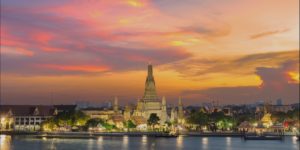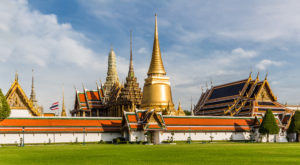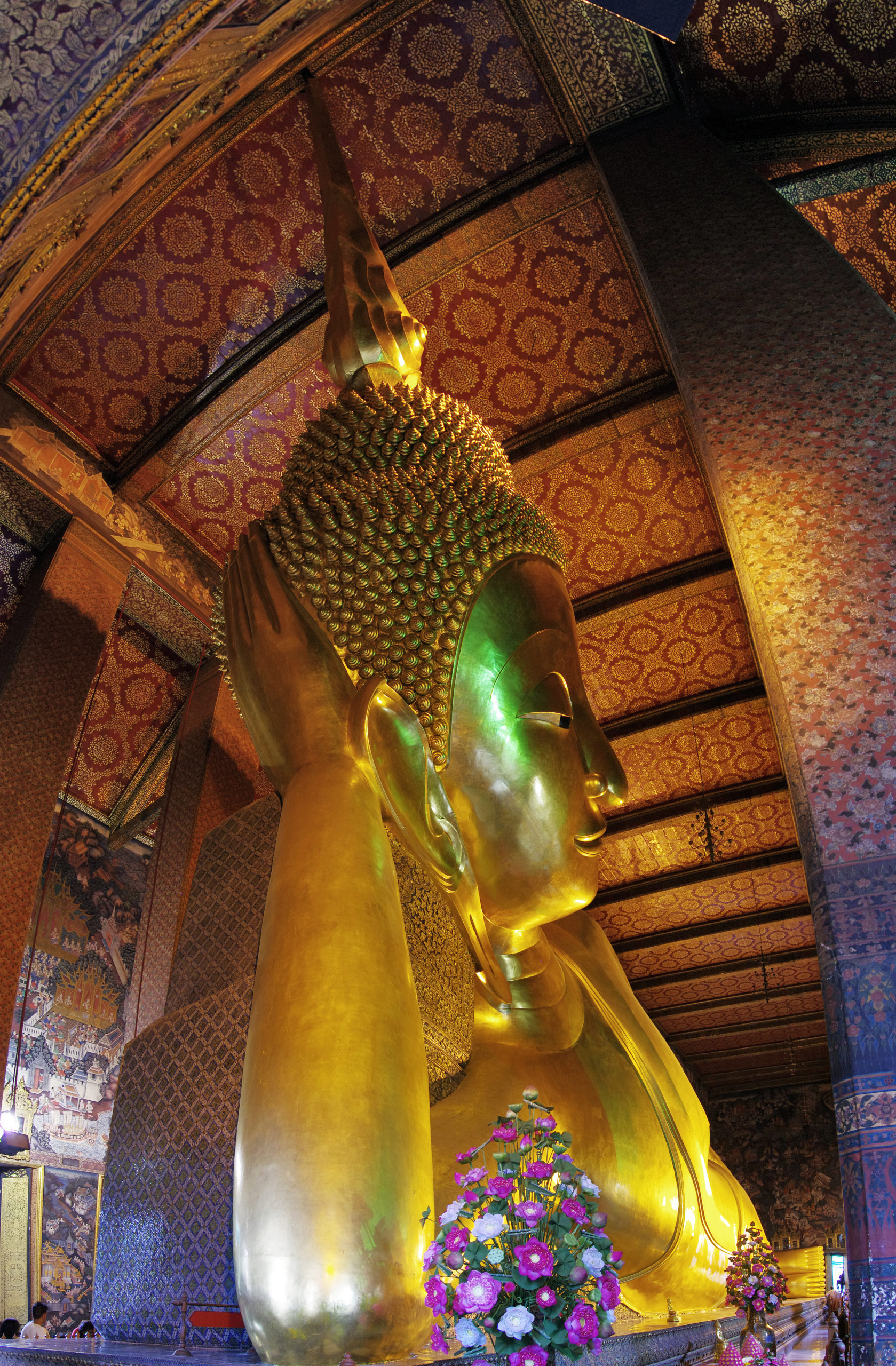
Wat Pho (Thai: วัดโพธิ์) also spelled Wat Po is a Buddhist temple complex in the Phra Nakhon District, Bangkok, Thailand. It is located on Rattanakosin Island, directly south of the Grand Palace. Known also as the Temple of the Reclining Buddha, its official name is Wat Phra Chetuphon Wimon Mangkhalaram Rajwaramahawihan.The more commonly known name, Wat Pho, is a contraction of its older name Wat Photaram
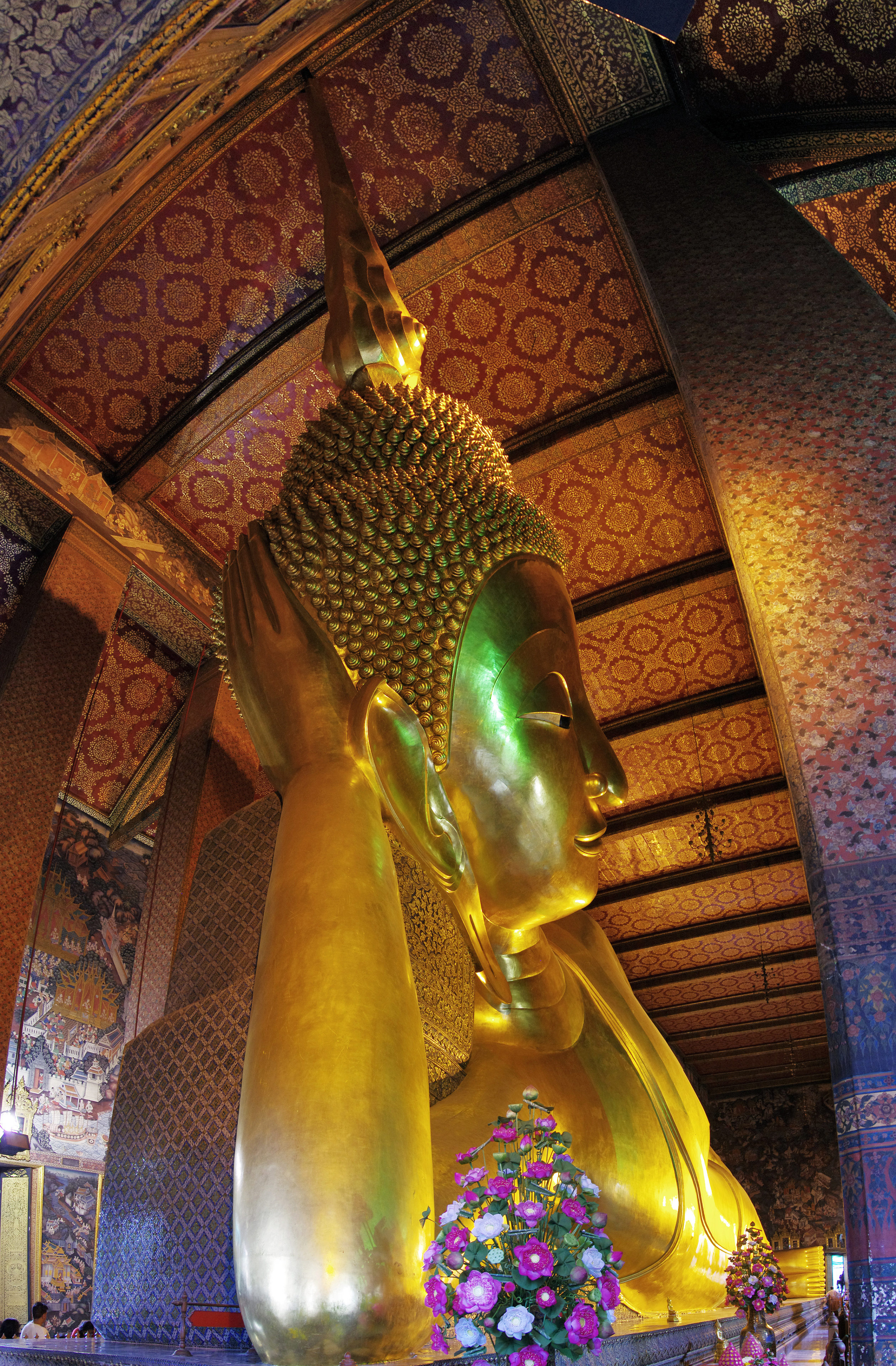
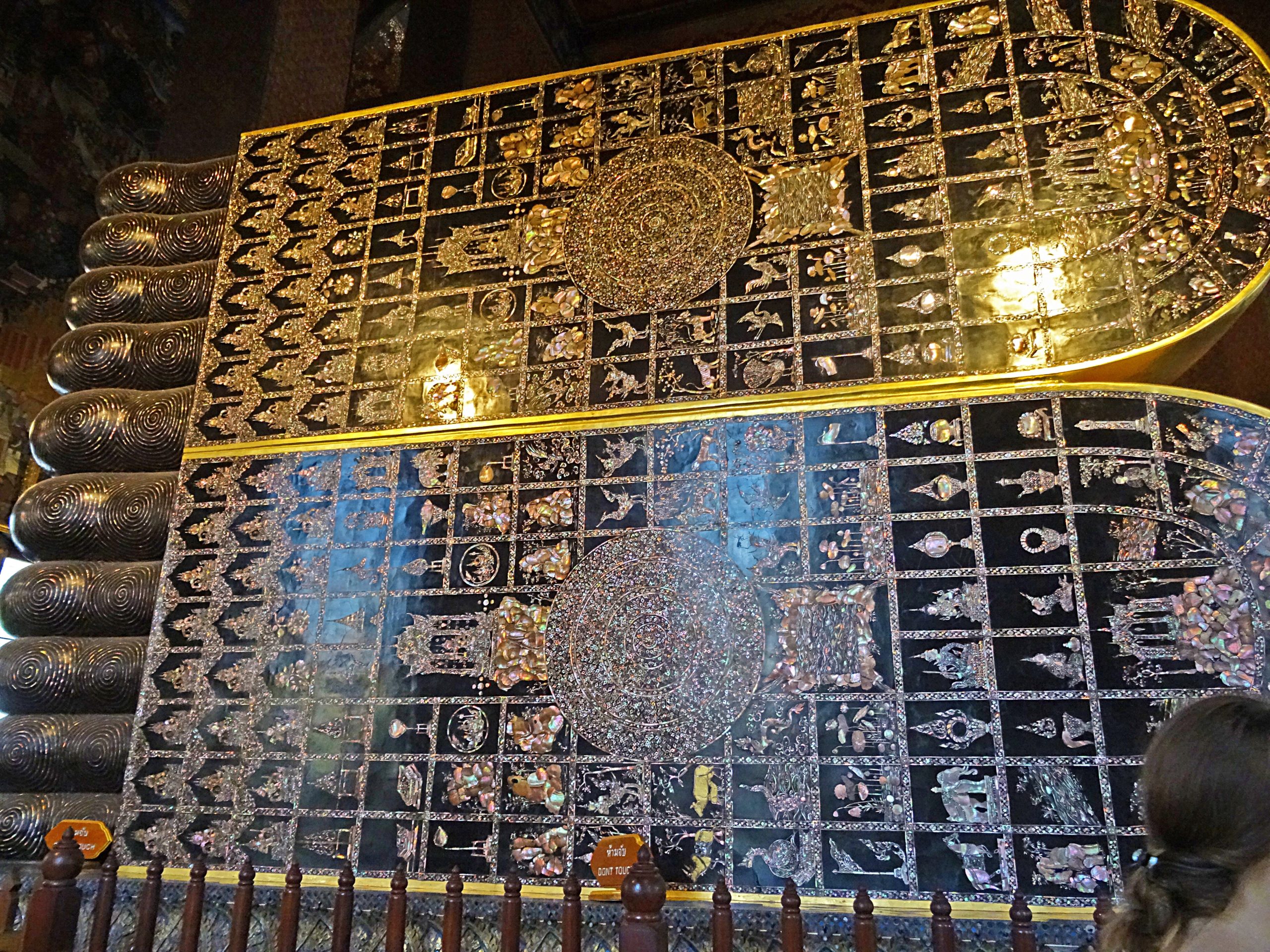
WAT PHO : SPECTACULAR VIEWS & EXPERIENCES
WAT PHO : VIEWS FROM AIR
WAT PHO : VIEWS OF RECLINING BUDDHA
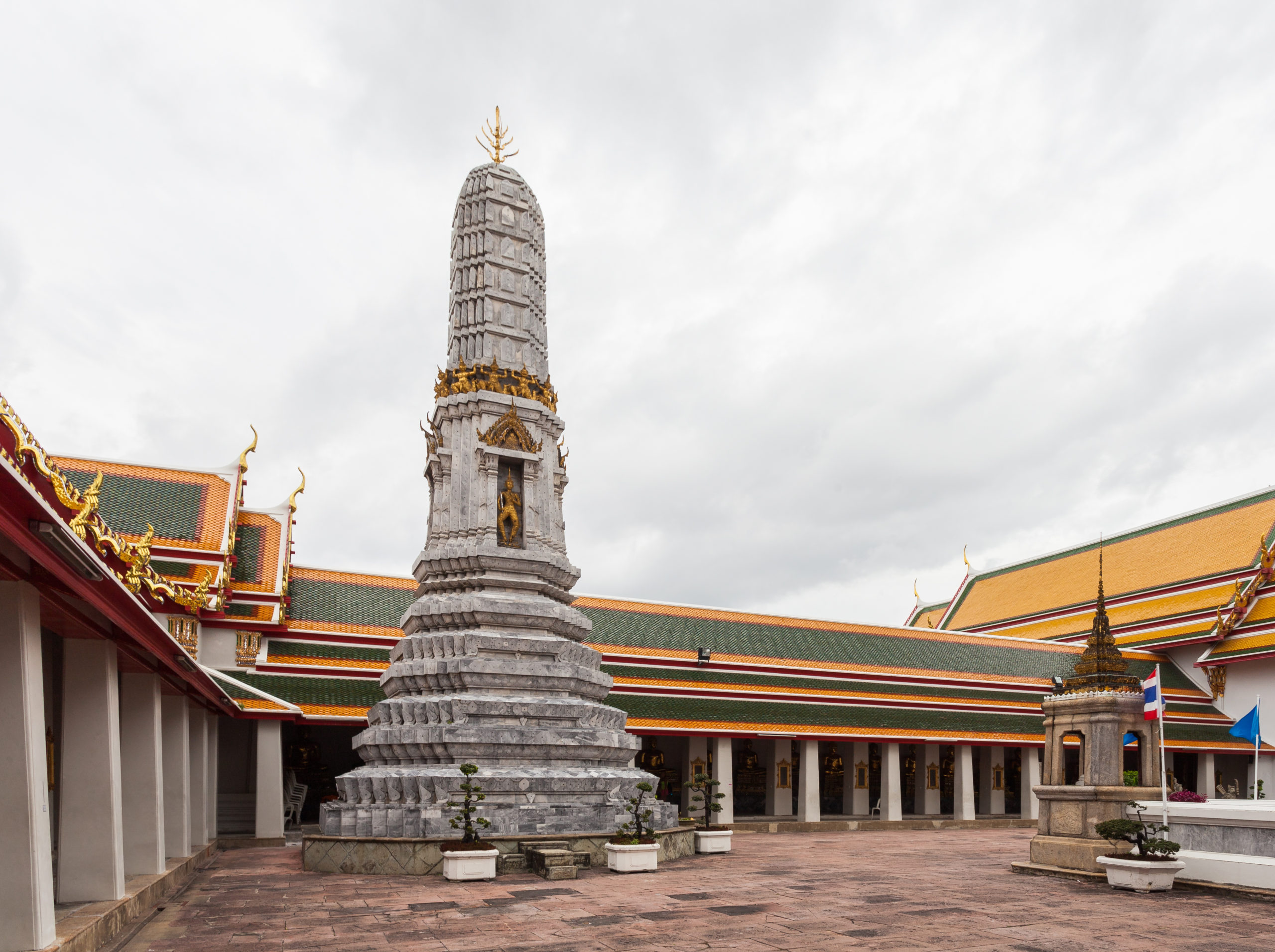
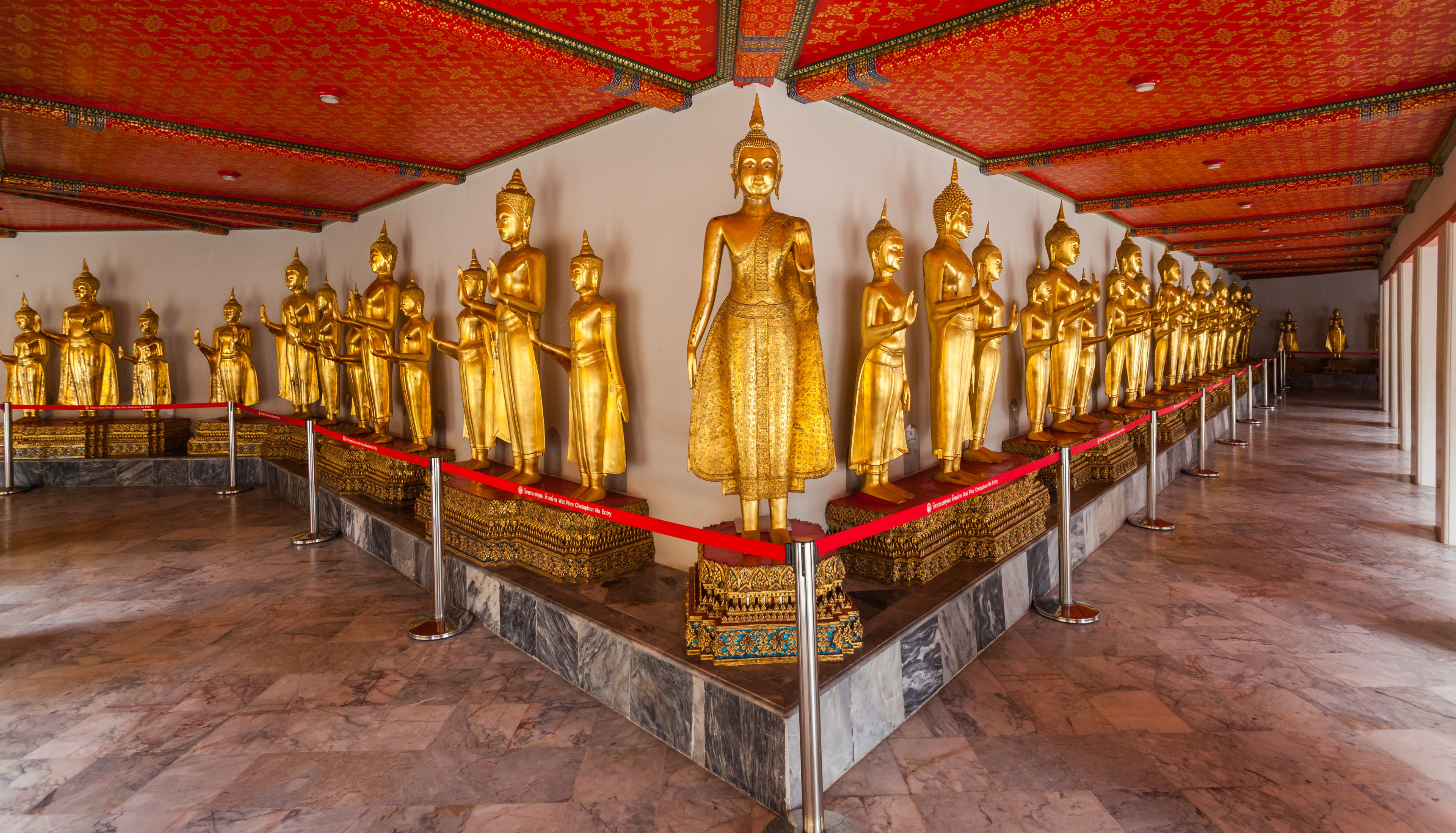
- Phra Rabiang – This double cloister contains around 400 images of Buddha from northern Thailand selected out of the 1,200 originally brought by King Rama I
- Of these Buddha images, 150 are located on the inner side of the double cloister, another 244 images are on the outer side
- These Buddha figures, some standing and some seated, are evenly mounted on matching gilded pedestals
- These images are from different periods in Thai history, such as the Chiangsaen, Sukhothai, U-Thong, and Ayutthaya eras, but they were renovated by Rama I and covered with stucco and gold leaves to make them look similar
- Buddha images in the cloister. The cloister is intersected with four viharas or viharns, one on each direction
- The Phra Rabiang is intersected by four viharns. The viharn in the east contains an 8-metre tall standing Buddha, the Buddha Lokanatha, originally from Ayutthaya
- In its antechamber is Buddha Maravichai, sitting under a bodhi tree, originally from Sawankhalok of the late Sukhothai period
- The one on the west has a seated Buddha sheltered by a naga, the Buddha Chinnasri, while the Buddha on the south, the Buddha Chinnaraja, has five disciples seated in front listening to his first sermon
- Both Buddhas in the south and west viharns were brought from Sukhothai by Rama I
- The Buddha in the north viharn called Buddha Palilai was cast in the reign of Rama I
- The viharn on the west also contains a small museum
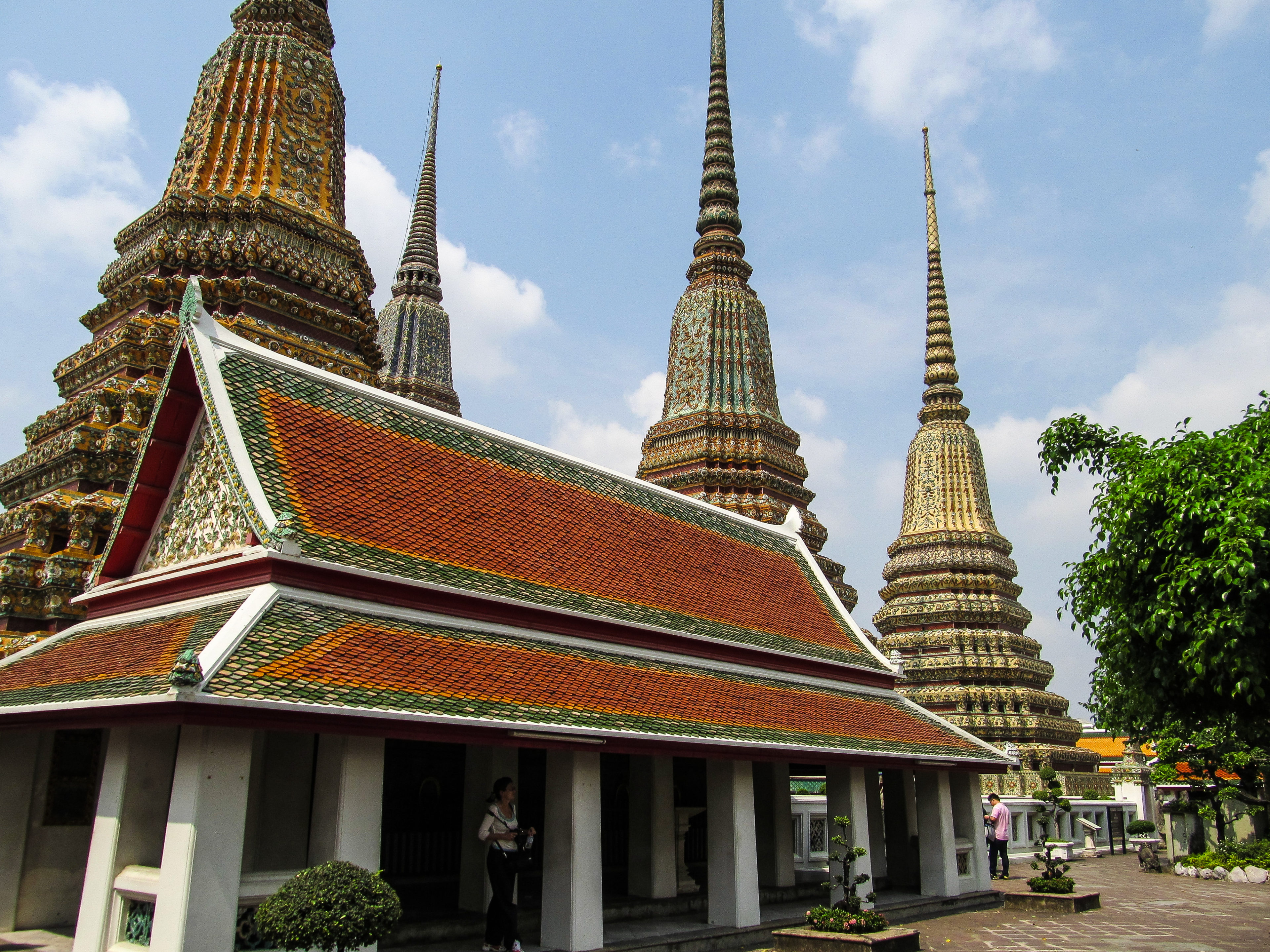
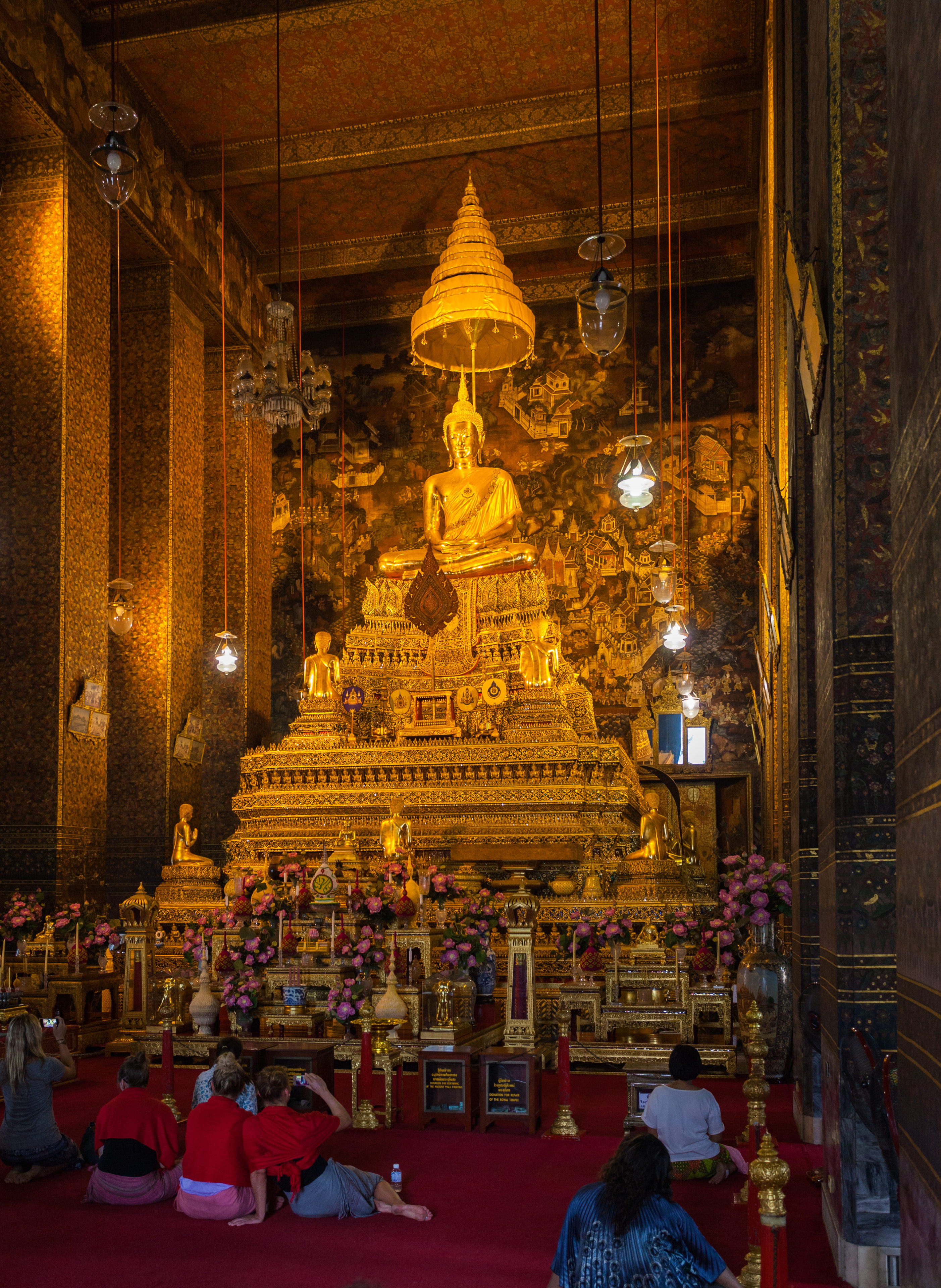
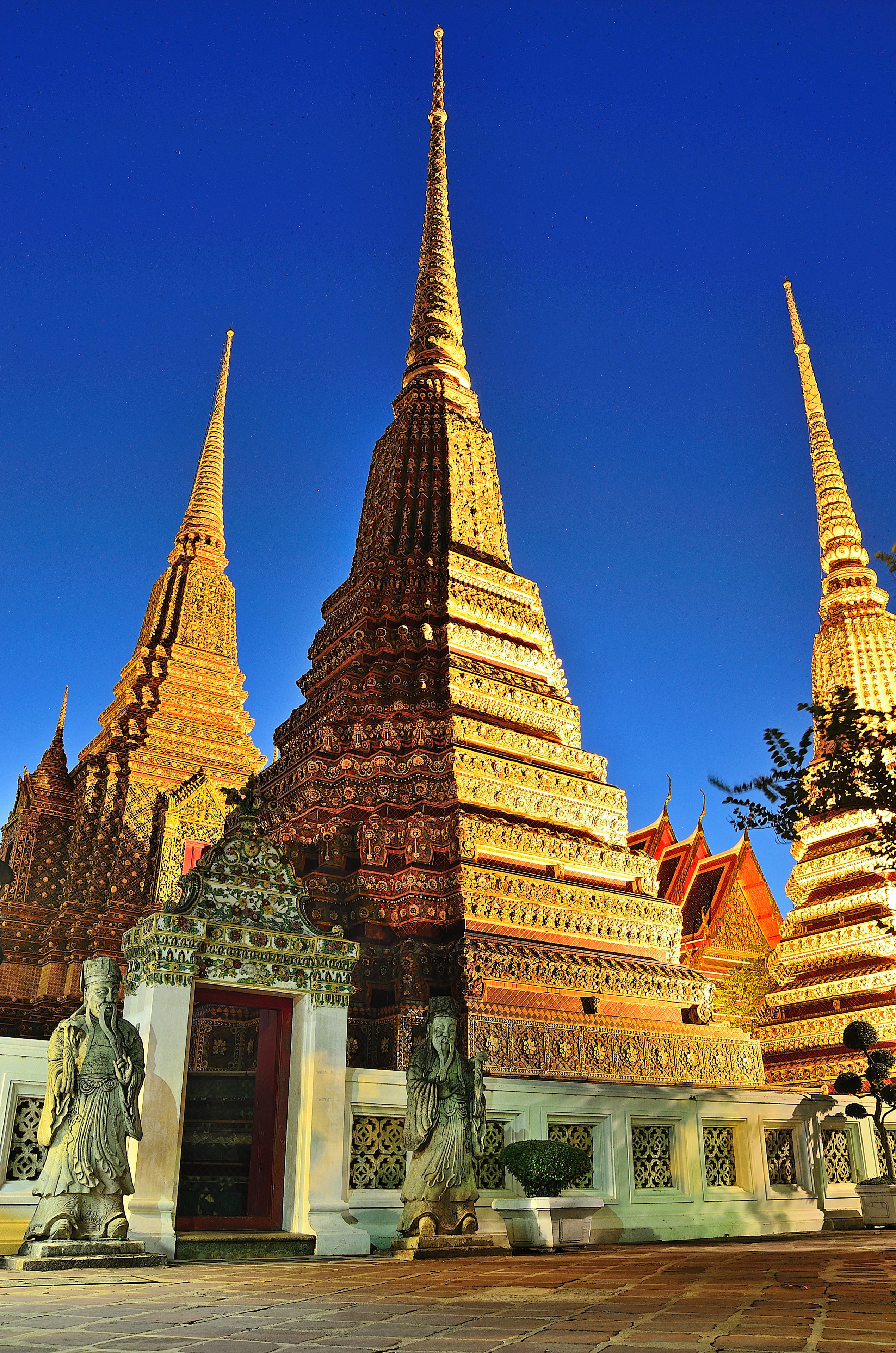
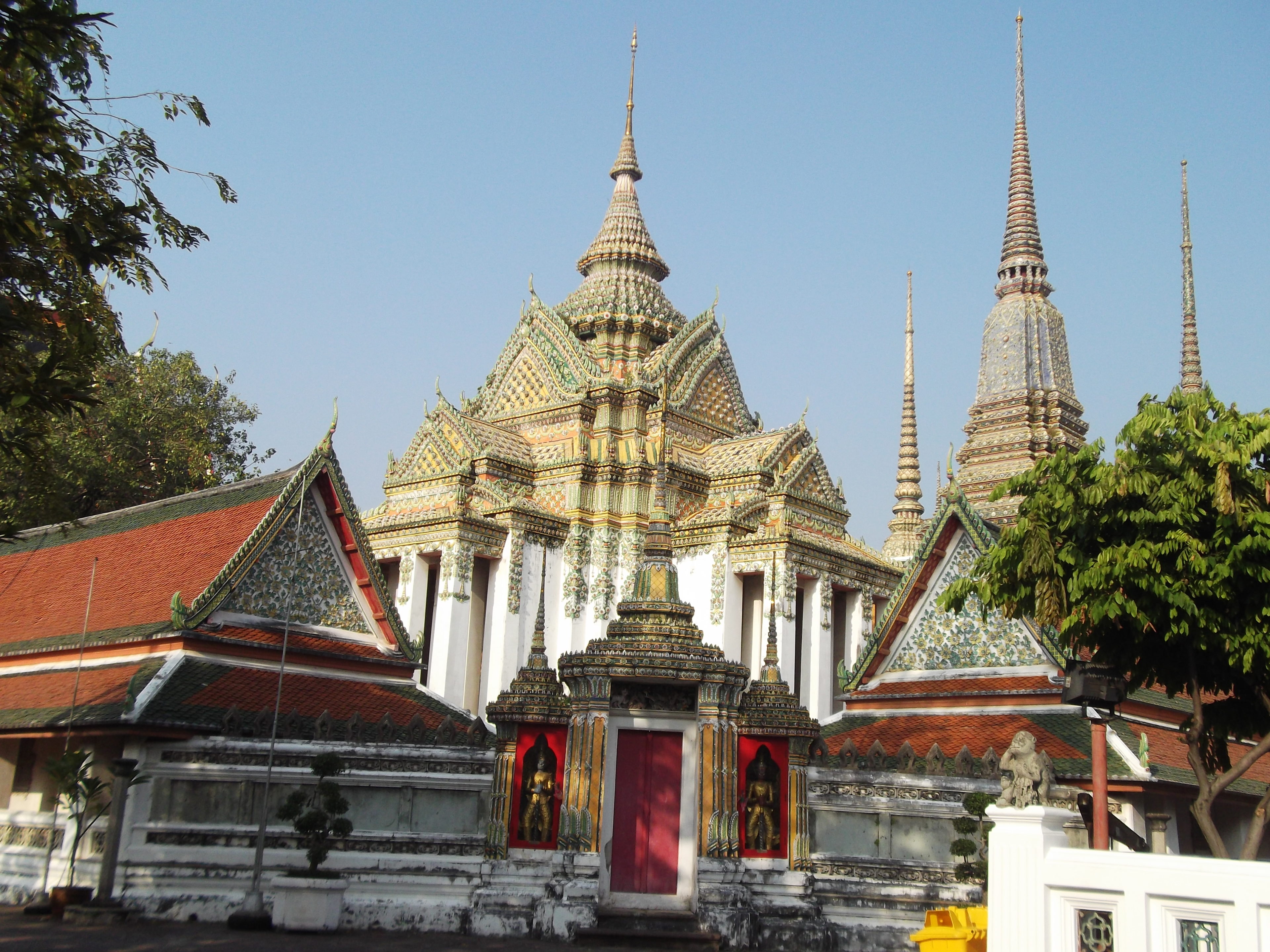
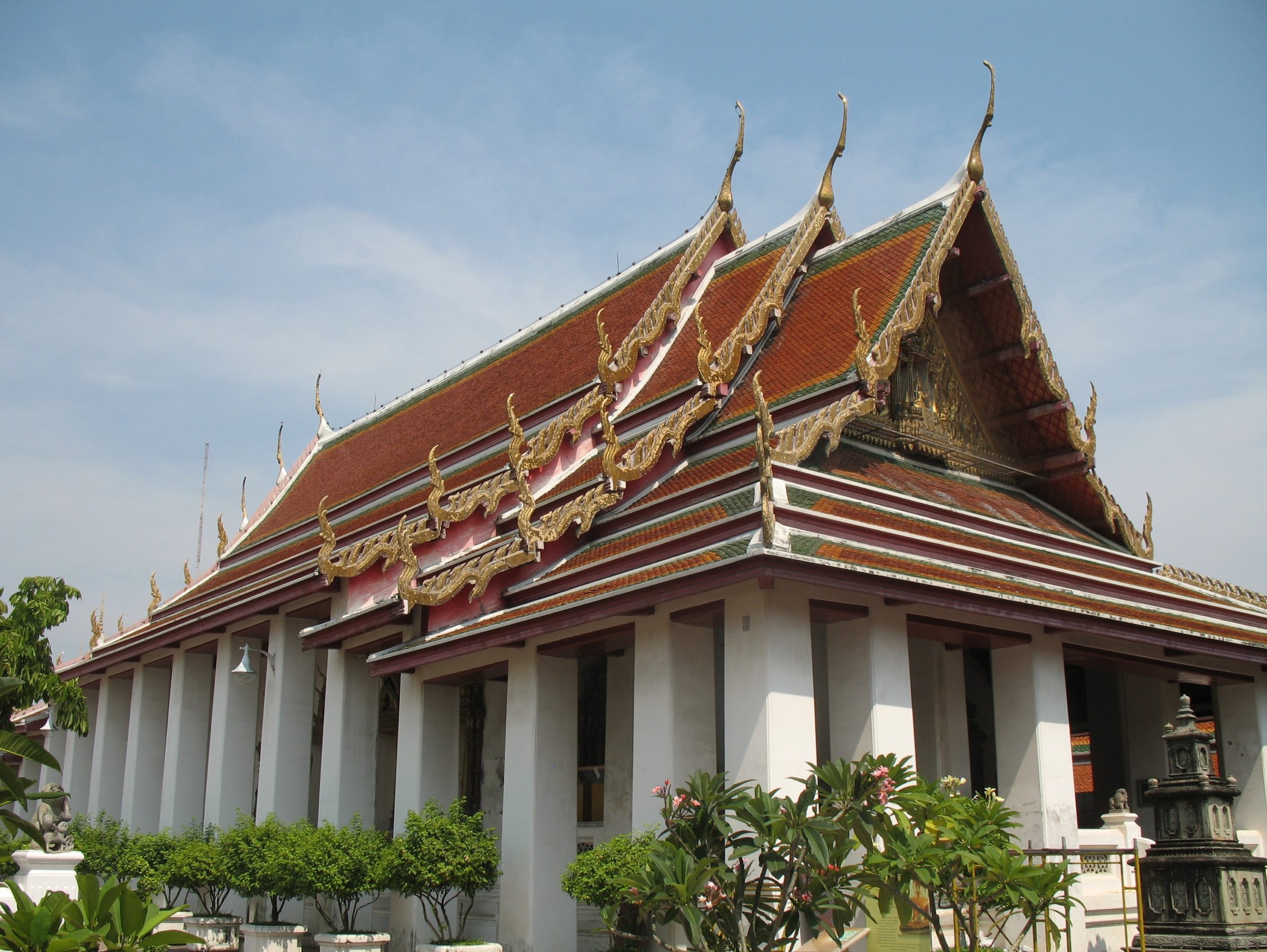
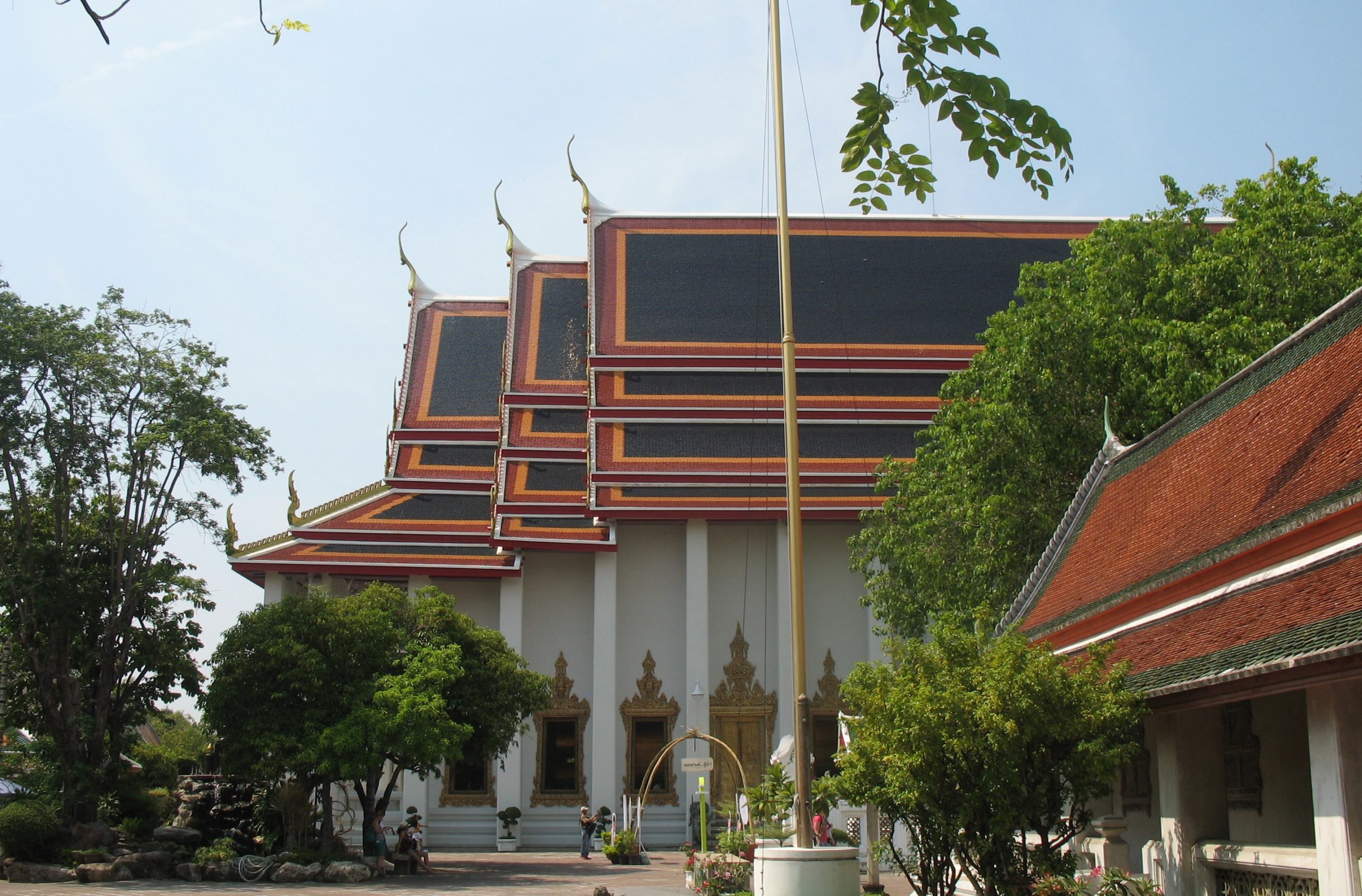
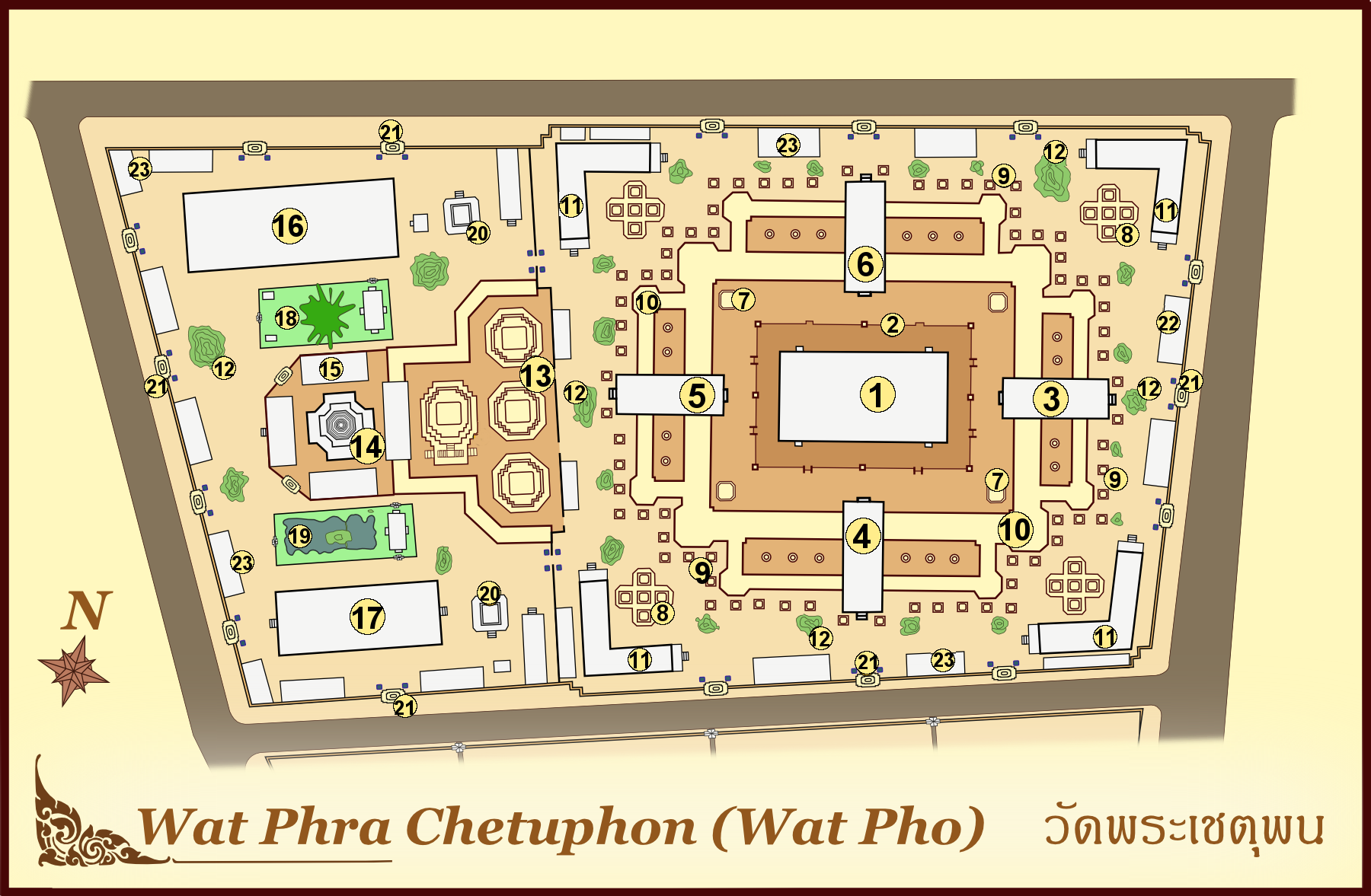
What is Wat Pho ?
- Wat Pho (Thai: วัดโพธิ์) also spelled Wat Po, is a Buddhist temple complex in the Phra Nakhon District, Bangkok, Thailand
- It is located on Rattanakosin Island, directly south of the Grand Palace
- Known also as the Temple of the Reclining Buddha, its official name is Wat Phra Chetuphon Wimon Mangkhalaram Rajwaramahawihan
- The more commonly known name, Wat Pho, is a contraction of its older name Wat Photaram
- The temple is first on the list of six temples in Thailand classed as the highest grade of the first-class royal temples
- It is associated with King Rama I who rebuilt the temple complex on an earlier temple site, and became his main temple where some of his ashes are enshrined
- The temple was later expanded and extensively renovated by Rama III
- The temple complex houses the largest collection of Buddha images in Thailand, including a 46 m long reclining Buddha
- The temple is considered the earliest centre for public education in Thailand, and the marble illustrations and inscriptions placed in the temple for public instructions has been recognised by UNESCO in its Memory of the World Programme
- It houses a school of Thai medicine, and is also known as the birthplace of traditional Thai massage which is still taught and practiced at the temple
Describe Wat Pho ?
- Wat Pho is one of the largest and oldest wats in Bangkok covering an area of 80000 square metres
- It is home to more than one thousand Buddha images, as well as one of the largest single Buddha images at 150 feet (46 m) in length
- The Wat Pho complex consists of two walled compounds bisected by Chetuphon Road running in the east–west direction
- The larger northern walled compound, the phutthawat, is the part open to visitors and contains the finest buildings dedicated to the Buddha, including the bot with its four directional viharn, and the temple housing the reclining Buddha
- The southern compound, the sankhawat, contains the residential quarters of the monks and a school
- The perimeter wall of the main temple complex has sixteen gates, two of which serve as entrances for the public (one on Chetuphon Road, the other near the northwest corner)

Chinese guardian figure beside a gate in Wat Pho
- The temple ground contains four great chedis, 91 small chedis (stupas or mounds), two belfries, a bot (central shrine), a number of viharas (halls) and various buildings such as pavilions, as well as gardens and a small temple museum
- Architecturally the chedis and buildings in the complex are different in style and sizes
- A number of large Chinese statues, some of which depict Europeans, are also found within the complex guarding the gates of the perimeter walls as well as other gates within the compound
- These stone statues were originally imported as ballast on ships trading with China
- Wat Pho was also intended to serve as a place of education for the general public
- To this end a pictorial encyclopedia was engraved on granite slabs covering eight subject areas, namely history, medicine, health, custom, literature, proverbs, lexicography, and the Buddhist religion
- These plaques, inscribed with texts and illustration on medicine, Thai traditional massage, and other subjects, are placed around the temple for example, within the Sala Rai or satellite open pavilions
- Dotted around the complex are 24 small rock gardens (Khao Mor) illustrating rock formations of Thailand, and one, called the Contorting Hermit Hill, contains some statues showing methods of massage and yoga positions
- There are also drawings of constellations on the wall of the library, inscriptions on local administration, as well as paintings of folk tales and animal husbandry
Describe the reclining Buddha @ Wa Pho
- The chapel and the reclining Buddha were built by Rama III in 1832
- The image of the reclining Buddha represents the entry of Buddha into Nirvana and the end of all reincarnations
- The posture of the image is referred to as sihasaiyas, the posture of a sleeping or reclining lion
- The figure is 15 m high and 46 m long, and it is one of the largest Buddha statues in Thailand
- The right arm of the Buddha supports the head with tight curls, which rests on two box-pillows richly encrusted with glass mosaics
- The figure has a brick core, which was modelled and shaped with plaster, then gilded
- The soles of the feet of the Buddha are 3 m high and 4.5 m long, and inlaid with mother-of-pearl
- They are each divided into 108 arranged panels, displaying the auspicious symbols by which Buddha can be identified, such as flowers, dancers, white elephants, tigers, and altar accessories
- At the center of each foot is a circle representing a chakra or energy point
- There are 108 bronze bowls in the corridor representing the 108 auspicious characters of Buddha
- Visitors may drop coins in these bowls as it is believed to bring good fortune, and it also helps the monks to maintain the wat
- Although the reclining Buddha is not a pilgrimage centre, it remains an object of popular piety
- An annual celebration for the reclining Buddha is held around the time of the Siamese Songkran or New Year in April, which also helps raise funds for the upkeep of Wat Pho
Thai Medicine & Massage @ Wat Pho
- The temple is considered the first public university of Thailand, teaching students in the fields of religion, science, and literature through murals and sculptures
- A school for traditional medicine and massage was established at the temple in 1955, and now offers four courses in Thai medicine: Thai pharmacy, Thai medical practice, Thai midwifery, and Thai massage
- This, the Wat Pho Thai Traditional Medical and Massage School, is the first school of Thai medicine approved by the Thai Ministry of Education, and one of the earliest massage schools
- It remains the national headquarters and the center of education of traditional Thai medicine and massage to this day
- Courses on Thai massage are held in Wat Pho, and these may last a few weeks to a year
- Two pavilions at the eastern edge of the Wat Pho compound are used as classrooms for practising Thai traditional massage and herbal massage, and visitors can received massage treatment here for a fee
- Foreigners from 135 countries have studied Thai massage at Wat Po
- There are many medical inscriptions and illustrations placed in various buildings around the temple complex, some of which serve as instructions for Thai massage therapists, particularly those in the north medical pavilion
- Among these are 60 inscribed plaques, 30 each for the front and back of human body, showing pressure points used in traditional Thai massage. These therapeutic points and energy pathways, known as sen, are engraved on the human figures, with explanations given on the walls next to the plaques
- They are based on the principle of energy flow similar to that of Chinese acupuncture
- The understanding so far is that the figures represent relationships between anatomical locations and effects produced by massage treatment at those locations, but full research on the diagrams has yet to be completed
WAT SAKET : SPECTACULAR VIEWS & EXPERIENCES
What is Wat Saket ?
- Wat Saket Ratcha Wora Maha Wihan usually shortened to Wat Saket is a Buddhist temple (wat) in Pom Prap Sattru Phai district, Bangkok, Thailand
- The temple dates back to the Ayutthaya era, when it was known as Wat Sakae. When Bangkok became the capital, King Rama I (1737–1809) renovated the temple and gave it its present name
- Its name roughly translated as “wash hair”
- Since it was believed that on the way the king returned from the war
- He stopped by to take a bath and wash his hair here, before entering inner city
What is Golden Mountain ?
- Phu Khao Thong (“Golden Mountain”) is a steep artificial hill inside the Wat Saket compound
- Rama I’s grandson, King Rama III (1787–1851), decided to build a chedi of huge dimensions inside Wat Saket, but the chedi collapsed during construction because the soft soil of Bangkok could not support the weight
- Over the next few decades, the abandoned mud-and-brick structure acquired the shape of a natural hill and was overgrown with weeds
- The locals called it the phu khao as if it were a natural feature
- During the reign of King Rama IV, construction began of a small chedi on the hill. It was completed early in the reign of his son, King Rama V (1853–1910)
- A relic of the Buddha was brought from Sri Lanka and placed in the chedi
- The surrounding concrete walls were added in the 1940s to stop the hill from eroding
- The modern Wat Saket was built in the early 20th century of Carrara marble
- An annual festival is held at Wat Saket every November, featuring a candlelight procession up Phu Khao Thong to the chedi along with a long red robe wrapped around the chedi, similar to “Hae Pha Khuen That” festival of Wat Phra Mahathat, Nakhon Si Thammarat province in sounthern
- Devotees write their names and names of family members on the robe and set the mind to pray, believed to have been fulfilled in prayer
- This festival has been carried on since the reign of King Rama V
- At the same period, a great Loi Krathong festival will take place at the temple, along with freak shows
- Phu Khao Thong is now a popular Bangkok tourist attraction and has become a symbol of the city
